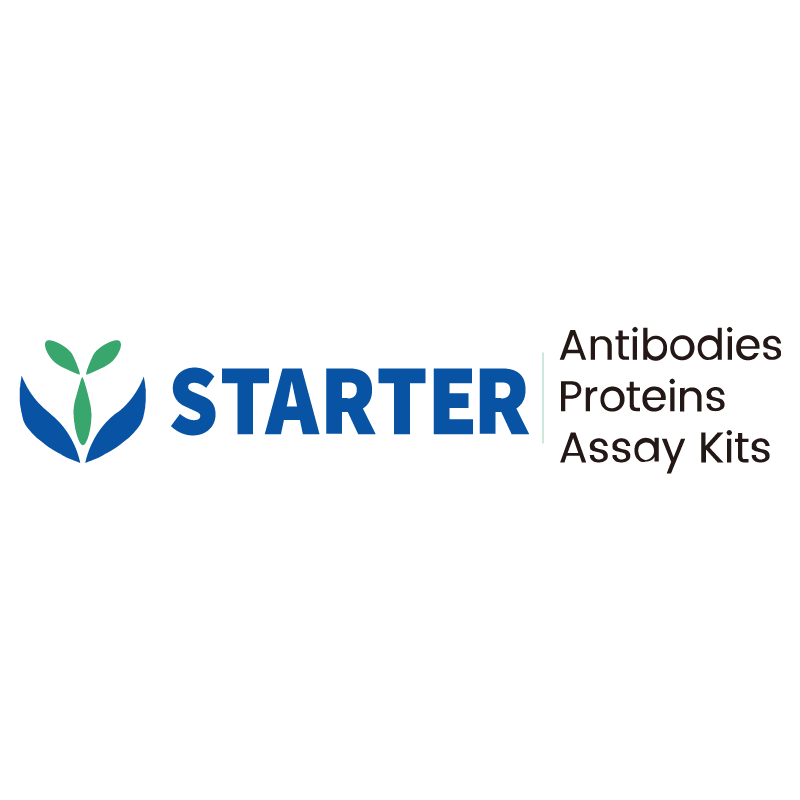WB result of c-IAP1 Recombinant Rabbit mAb
Primary antibody: c-IAP1 Recombinant Rabbit mAb at 1/1000 dilution
Lane 1: HeLa whole cell lysate 20 µg
Lane 2: HepG2 whole cell lysate 20 µg
Lane 3: HT-29 whole cell lysate 20 µg
Secondary antibody: Goat Anti-rabbit IgG, (H+L), HRP conjugated at 1/10000 dilution
Predicted MW: 70 kDa
Observed MW: 65 kDa
This blot was developed with high sensitivity substrate
Product Details
Product Details
Product Specification
| Host | Rabbit |
| Antigen | c-IAP1 |
| Synonyms | Baculoviral IAP repeat-containing protein 2, Cellular inhibitor of apoptosis 1 (C-IAP1), IAP homolog B, Inhibitor of apoptosis protein 2 (hIAP-2; hIAP2), RING finger protein 48, RING-type E3 ubiquitin transferase BIRC2, TNFR2-TRAF-signaling complex protein 2, BIRC2, API1, MIHB, RNF48 |
| Immunogen | Synthetic Peptide |
| Location | Cytoplasm, Nucleus |
| Accession | Q13490 |
| Clone Number | S-1128-137 |
| Antibody Type | Recombinant mAb |
| Isotype | IgG |
| Application | WB, IHC-P, ICC, IP |
| Reactivity | Hu |
| Purification | Protein A |
| Concentration | 0.5 mg/ml |
| Conjugation | Unconjugated |
| Physical Appearance | Liquid |
| Storage Buffer | PBS, 40% Glycerol, 0.05% BSA, 0.03% Proclin 300 |
| Stability & Storage | 12 months from date of receipt / reconstitution, -20 °C as supplied |
Dilution
| application | dilution | species |
| WB | 1:1000 | |
| IP | 1:50 | |
| IHC-P | 1:250 | |
| ICC | 1:500 |
Background
c-IAP1, which stands for cellular Inhibitor of Apoptosis Protein 1, is a member of the Inhibitor of Apoptosis (IAP) family. These proteins are known for their anti-apoptotic properties and are involved in the regulation of cell survival and death pathways. c-IAP1, in particular, has been shown to inhibit apoptosis by directly binding to and inhibiting the activity of specific caspases, which are cysteine proteases that play a central role in the execution of apoptosis. Abnormal expression of IAP family members, including c-IAP1, has been associated with various cancers, suggesting their role in tumorigenesis and resistance to therapy. High expression levels of c-IAP1 in certain cancer cells have been linked to increased resistance to radiation and chemotherapy, making it a potential target for cancer therapy.
Picture
Picture
Western Blot
IP
c-IAP1 Rabbit mAb at 1/50 dilution (1 µg) immunoprecipitating c-IAP1 in 0.4 mg HepG2 whole cell lysate.
Western blot was performed on the immunoprecipitate using c-IAP1 Rabbit mAb at 1/1000 dilution.
Secondary antibody (HRP) for IP was used at 1/1000 dilution.
Lane 1: HepG2 whole cell lysate 20 µg (Input)
Lane 2: c-IAP1 Rabbit mAb IP in HepG2 whole cell lysate
Lane 3: Rabbit monoclonal IgG IP in HepG2 whole cell lysate
Predicted MW: 70 kDa
Observed MW: 65 kDa
This blot was developed with high sensitivity substrate
Immunohistochemistry
IHC shows positive staining in paraffin-embedded human spleen. Anti- c-IAP1 antibody was used at 1/250 dilution, followed by a HRP Polymer for Mouse & Rabbit IgG (ready to use). Counterstained with hematoxylin. Heat mediated antigen retrieval with Tris/EDTA buffer pH9.0 was performed before commencing with IHC staining protocol.
IHC shows positive staining in paraffin-embedded human lung squamous cell carcinoma. Anti- c-IAP1 antibody was used at 1/250 dilution, followed by a HRP Polymer for Mouse & Rabbit IgG (ready to use). Counterstained with hematoxylin. Heat mediated antigen retrieval with Tris/EDTA buffer pH9.0 was performed before commencing with IHC staining protocol.
Immunocytochemistry
ICC shows positive staining in HepG2 cells. Anti-c-IAP1 antibody was used at 1/500 dilution (Green) and incubated overnight at 4°C. Goat polyclonal Antibody to Rabbit IgG - H&L (Alexa Fluor® 488) was used as secondary antibody at 1/1000 dilution. The cells were fixed with 100% ice-cold methanol and permeabilized with 0.1% PBS-Triton X-100. Nuclei were counterstained with DAPI (Blue). Counterstain with tubulin (Red).


